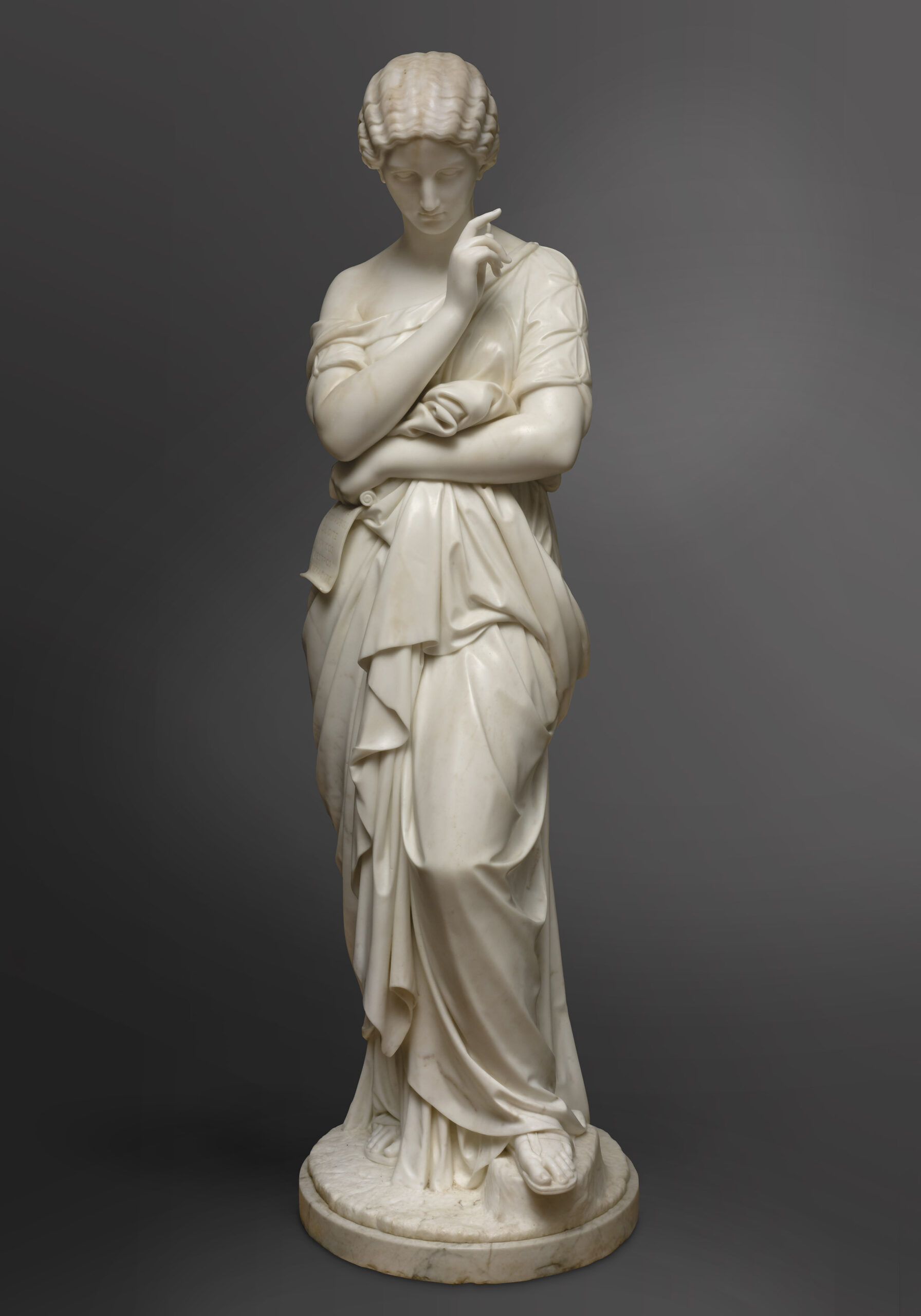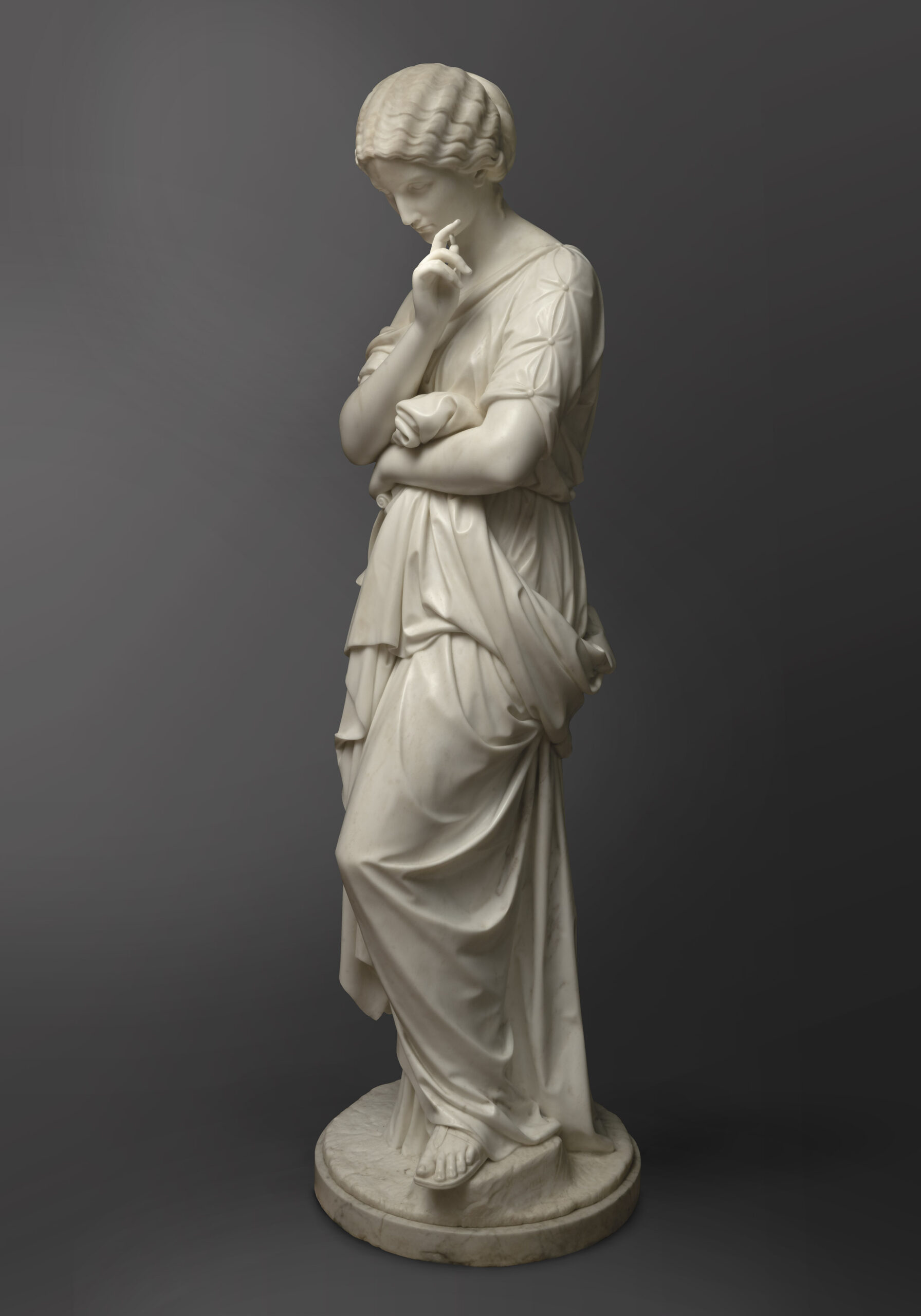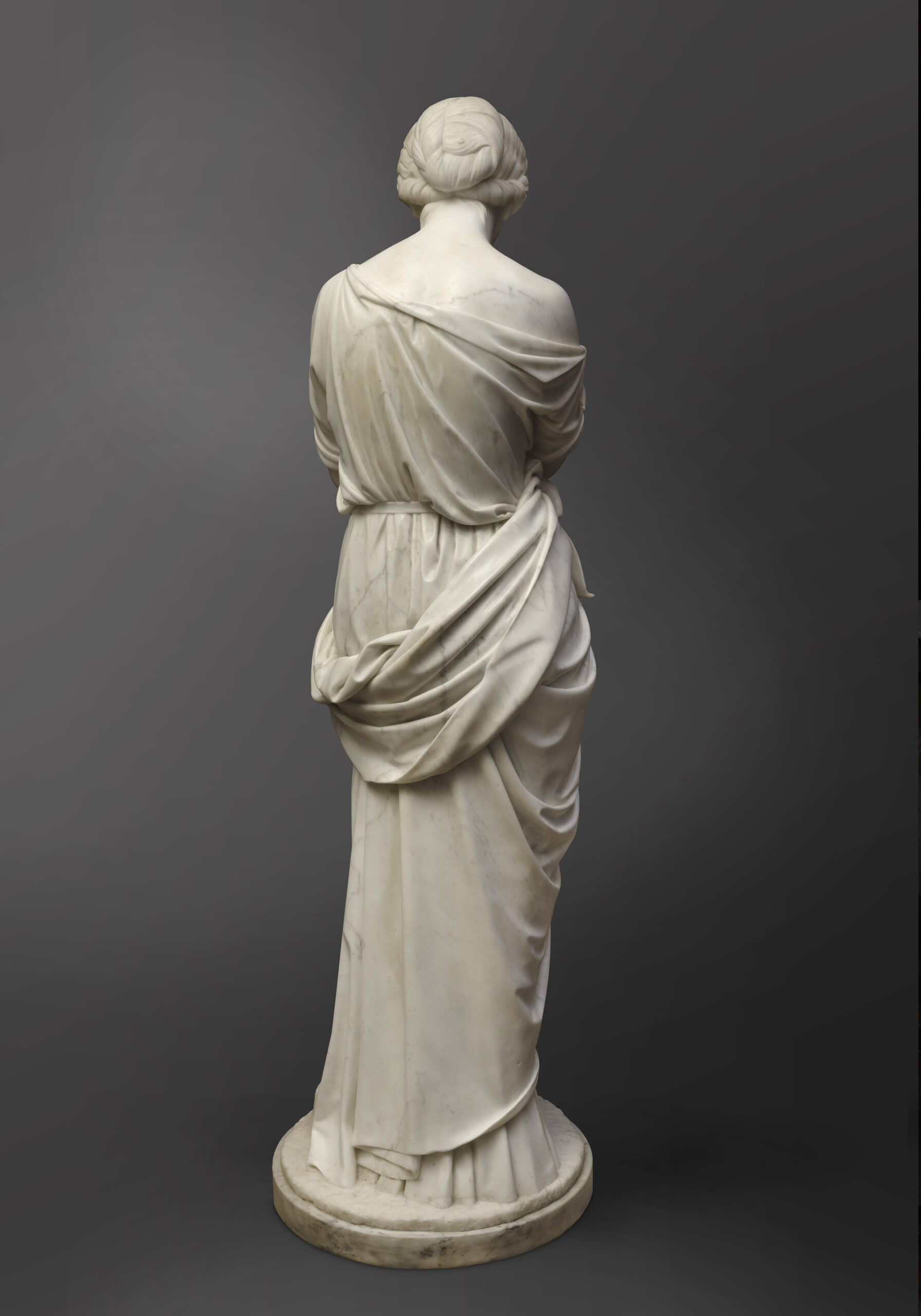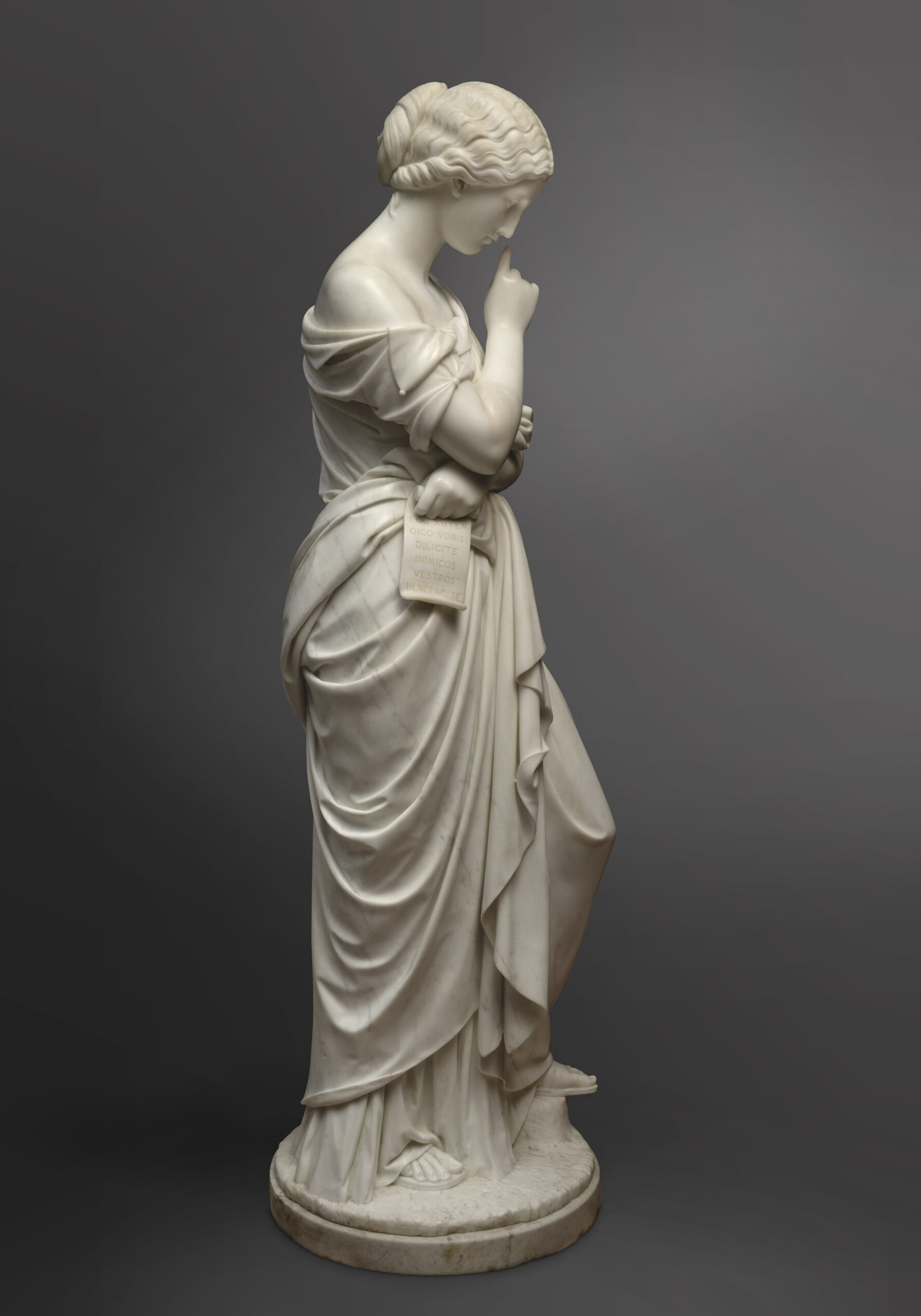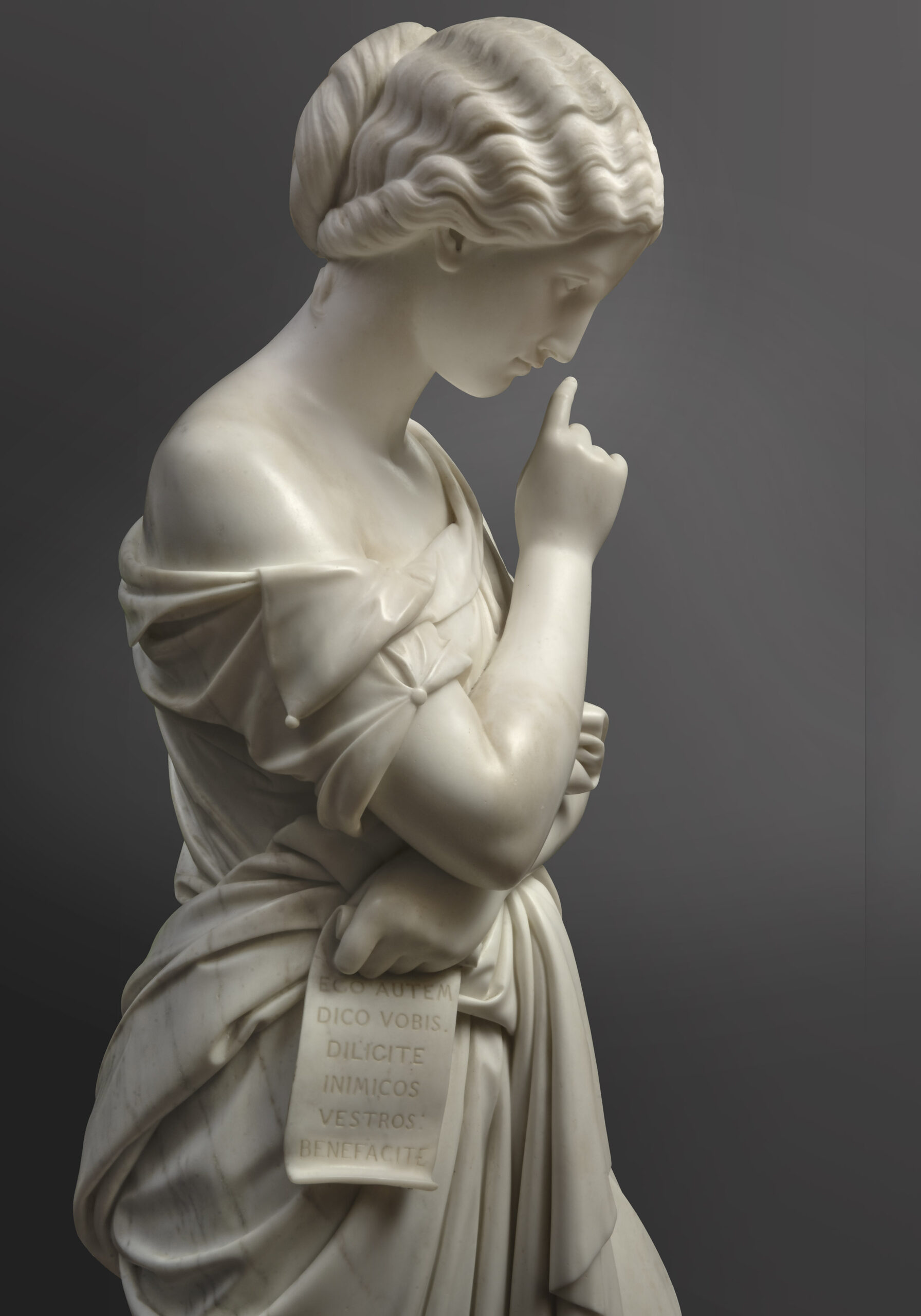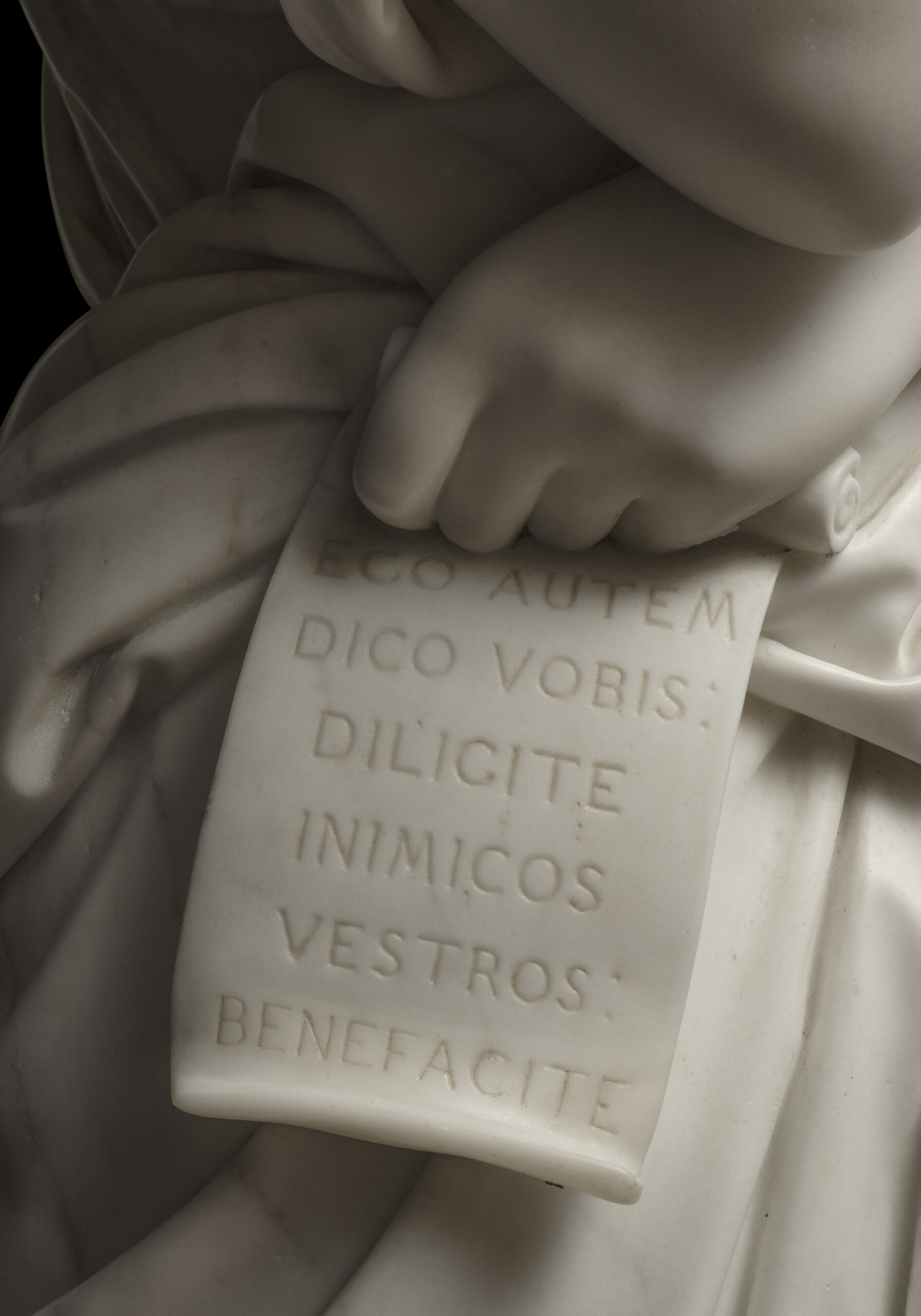FABIOLA
STEFANO GALLETTI (1832-1905)
Italian
Date : 1864
Dimensions : 160 cm (Height)/240 cm (Total Height)
Material : White Carrara marble
Signature : “Stefano Galletti / Roma 1869”
Titled : “Fabiola”
Provenance : Alfred Morrison’s collection, Fonthill House, Wiltshire, UK
Historical and artistic context
The marble sculpture Fabiola, created in Rome in 1864 by Stefano Galletti, draws inspiration from Nicholas Wiseman’s popular novel Fabiola or the Church of the Catacombs (1854). Set in 4th-century Rome, the story depicts a noblewoman named Fabiola, who, moved by her humble Christian slave Syra, embraces the Christian faith. Galletti’s interpretation vividly captures this moment of spiritual transformation with striking psychological depth.
Fabiola is portrayed in a contemplative, almost meditative pose, delicately studying a scroll inscribed with a passage from the Gospel of Matthew: “Love your enemies, do good to those who hate you.” Her classical drapery folds with architectural elegance, balanced by a meticulously styled coiffure. Yet it is her gentle downward gaze and serene facial expression that imbue the piece with subtle Christian symbolism and inner conviction. The precision of the anatomy and the fluidity of the marble work demonstrate Galletti’s refined technical skill and emotional sensitivity.
This sculpture exemplifies the 19th-century fascination with moral allegory and spiritual introspection, skillfully filtered through a neoclassical sensibility. By weaving together themes of faith, virtue, and personal transformation, Galletti achieves a rare harmony of literary reference and sculptural mastery.
Galletti’s reputation was solidified with Fabiola, praised by Italian historian Paolo Campello della Spina as the work that established him as one of the foremost Roman sculptors of his generation.
Literature
-
A. Panzetta, Nuovo Dizionario Degle Scultori Italiani Dell’Ottocento e Del Primo Novecento, Turin, 2003, p. 422
-
Paolo Campello, Demogoghi e conservatori al tempo di Cesare, ed altri scritti, Rome, 1882, pp.136-137
-
O. Raggi, Della vitta e delle opere di Pietro Tenerani, Florence, 1880, p. 428

